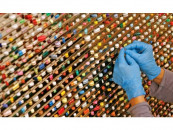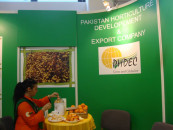Profits shoot up as Nestle’s margins grow
However, figures show slowest quarterly sales growth since 2010.

Despite lower purchasing power, sales of higher-margin products of the company supported gross margins and helped profits to grow. PHOTO: FILE
Nestle Pakistan – a subsidiary of the world’s largest food products maker Nestle S.A – witnesses the lowest first quarter sales growth since 2010.
Pakistan’s social and economic environment continues to challenge the company as ongoing inflationary pressure and energy crisis impacted the rising middle-class’ purchasing power, thus Nestle shifted its focus to cost cutting and optimisation to grow its bottom-line.
Despite lower purchasing power, sales of higher-margin products of the company supported gross margins and helped profits to grow.
On Friday, the company announced results for the first quarter of 2013: net revenues remained virtually flat, growing just 1.2% to Rs20.427 billion, and despite flat sales profits shot up 13.7% to Rs1.892 billion over the previous quarter, according to a notice sent to the Karachi Stock Exchange.

Growth in Nestle’s profits is truly remarkable as, considering the fact that it is Pakistan’s largest food and consumer goods company, it still manages to show growth in gross margins. Nestle’s gross margins grew 437 basis points to 31.62% as its cost of sales contracted by Rs722.47 million to Rs13.968 billion over the corresponding last quarter ,suggesting that the company is selling more of its higher-margin products.
However, climbing expenses somewhat eroded the full impact of growing margins on the bottom-line as distribution and selling expenses rose 27%, partly attributed to higher costs regarding installation of more refrigerators as more of its chilled products launched recently get sold.
The major new products launched during 2012 included: Nestle Pure Life Protect, Nestle Meethay, Nestle Actiplus yogurt, Nestle Yelly yogurt, Nescafe ready to drink coffee and Nestle Fruita Vitals Pomegranate.
The other part can be attributed to expenses incurred due to Nestle expanding its distribution network in the country where transportation is poor and cost of getting products to customers is high. Finance costs declined 4% to Rs412.744 million in the quarterly period.
Nestle Pakistan’s chief Magdi Batato, in his directors review of the annual report 2012, said that Nestle plans to invest Rs6 billion in 2013, primarily to further increase capacity to meet consumer demand.
In March 2013, Nestle announced completion of its new milk power drying facility plant with an additional investment of $104 million at its Sheikhupura factory.
In 2012, the company invested heavily in various projects related to capacity enhancement and infrastructure improvement.
Nestle’s growth is indicative of the tremendous room for growth in the Pakistani food and consumer goods market. Consumer spending is expanding as the middle-class grows and more companies like Engro Foods enter the market.
Engro Foods had over the years shown great performance and has become one of the major contributors to the profits of its parent Engro Corporation which operates in fertilisers, energy and polymer sectors, showing the potential in the Pakistani FMCG market.
With its major competitor Unilever Pakistan out of the Karachi Stock Exchange, Nestle can be the hot stock for investors in the rapidly expanding FMGC market.
Published in The Express Tribune, April 20th, 2013.
Like Business on Facebook to stay informed and join in the conversation.



















COMMENTS
Comments are moderated and generally will be posted if they are on-topic and not abusive.
For more information, please see our Comments FAQ